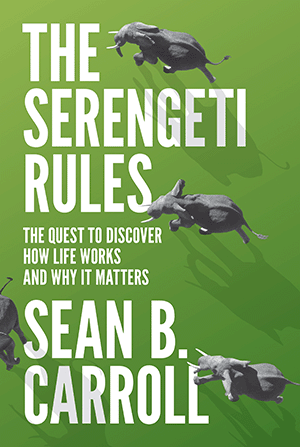Transcript
How does life work? How does nature produce the right numbers of zebras and lions on the African savanna, or fish in the ocean? How do our bodies produce the right numbers of cells in our organs and bloodstream?
Biologist Sean B Carroll talks to Craig Barfoot about his latest book, The Serengeti Rules.They explore how life works at vastly different scales.
We find out how wolves can change the physical shape of rivers and why, on the plains of the Serengeti, 150kg is the number which determines whether you will likely get eaten or not.
This is a thoughtful and at times humorous conversation about the state of our world’s wildlife areas and the rules which determine how nature operates.
Reviews of the book:
“In The Serengeti Rules, the author goes from E. coli to elephants to lay out the basic rules that shape so much of what’s around us and inside us.”–Brian Switek, Wall Street Journal
“In this remarkably engaging book, Carroll . . . persuasively argues that life at all levels of complexity is self-regulated, from the inner workings of cells to the larger relationships governing the Serengeti ecosystem. . . . Carroll superbly animates biological principles while providing important insights.”—Publishers Weekly
“The Serengeti Rules is one of the best biology books for general readers I’ve ever encountered. It should be required reading for every college student, regardless of major.”–Andrew H. Knoll, Harvard University
“A compelling read filled with big, bold ideas. . . . Through compelling storytelling, key insights of distant, isolated biologists are brought to life. . . . I suspect that many will find new insights and inspiration here… Carroll has made a strikingly clear case that ecology is a science on a par with molecular biology and genetics. In many ways, this book is an homage to Charles Elton. . . . Building on his vision, Carroll provides a passionate motto for the twenty-first century: ‘better living through ecology.’ Are the Serengeti Rules a panacea? No, but Carroll convincingly reveals them to be a sturdy foundation for the future of biology, for human well-being, and for conservation and management.”–Brian J. Enquist, Nature
“A thought-provoking challenge to complacency.”—Kirkus
Tags: Biodiversity, Biology, How life works, Nature


Subscribe with…